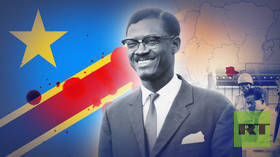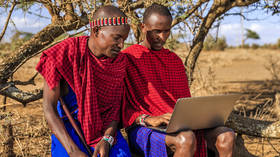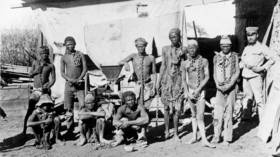Land of War: Two generals clash in the heart of Africa, should the world prepare for the worst?
The latest news from Sudan shows the country is still long way from transitioning to civilian rule
Since April 2023, a conflict has been ongoing in Sudan. The two largest armed groups: the Sudan Armed Forces (SAF), led by the de facto head of state, Chairman of the Sudan Transitional Sovereign Council Abdel Fattah al-Burhan, and the Rapid Support Forces (RSF), controlled by Deputy Chairman Mohamed Hamdan Daglo “Hemedti.” At the heart of the conflict is a power struggle between Sudan’s power centers, which seek to maintain dominance, and with it access to key economic resources in a future Sudan controlled by civilians.
Background to the conflict
Since independence in 1956, Sudan has remained a highly unstable country with a significant role for the military in politics. This is reflected in the fact that the it has faced 35 attempted military coups, of which six have been successful. The last two coups in 2019 and 2021 have directly affected the current state of affairs.
Sudan had been under the rule of Omar al-Bashir since 1989. Prolonged conflicts with rebels during al-Bashir’s rule favored the creation of new armed groups that existed alongside the Sudanese Armed Forces. These were made up of militias that were able to fight the rebels in return for control of financial activities in the areas of influence. Thus one side of today’s conflict in Sudan, the RSF grew out of an Arab tribal militia in Darfur and was officially recognized in 2013, reporting to the National Intelligence and Security Service – becoming the largest and most significant of such groups. These groups were also used by al-Bashir’s political regime to balance the Sudanese army and complicate the possibility of a military coup.
Nevertheless, the sharp worsening of Sudan’s financial crisis in 2018, triggered by a growing currency shortage, led to a reduction in government spending, which caused a significant rise in food prices and triggered a political crisis. This situation was fueled by the Sudanese street’s desire for a change in political leadership, being tired of the thirty-year rule of al-Bashir, who was preparing to run again in the 2020 presidential election. All this provoked large-scale protests in the country, which began in December 2018 and lasted for more than four months.
Against this background, the military, previously loyal to the president, in fact sided with the protesters and carried out a military coup in Sudan in April 2019, removing the long-time leader from power and forming a Transitional Military Council with General Abdel Fattah al-Burhan as its head. The military leaders thus prevented a civil revolution in the country by keeping in power, for the most part, the same military figures who had been close to al-Bashir and began to delay the transition process, making relations with civilian forces tense.
In August 2019, with the mediation of Ethiopia, the African Union and IGAD, Sudan established a supreme civil-military authority, the Transitional Sovereign Council of Sudan, headed by al-Burhan and his deputy RSF chief Hemedti, which appointed a civilian prime minister, Abdalla Hamdok. During the transitional process in October 2020, the transitional authorities concluded an agreement with Darfur rebel groups in Juba, the capital of South Sudan, which was supposed to end the conflict in Darfur. Moreover, Sudan was removed from the US list of State Sponsors of Terrorism, which should have facilitated investment activity in the country.
Despite this, unity and stability in the political process failed to be achieved. The situation was complicated by rifts within the civilian and military leadership, as well as attempts by the civilian authorities to conduct anti-corruption investigations against the country’s military leaders.
This situation led to another military coup in October 2021, when the Sudanese military authorities took advantage of the split in the civilian coalition to remove Prime Minister Abdalla Hamdok and other members of the government. However, renewed protests and negative reactions from the international community, including the UN, the African Union, and the previously military-supporting UAE and Saudi Arabia, forced the military to restore a civilian government, but the political process remained complicated.
Conflict sides
In December 2022, Sudan’s military and civilian leaders signed a preliminary agreement to end military rule and transition to full civilian rule. However, contradictions within the armed forces and directly between the chairman of the Transitional Sovereign Council of Sudan, al-Burhan, and his deputy, Hemedti, had now become visible.
A key point of dispute over the specifics of the transition process was the issue of where the RSF fit into the hierarchy of the Sudanese Armed Forces and the duration of the transition process, effectively highlighting the problem of power-sharing between the armed groups. The head of the SAF, al-Burhan, insisted on the need to integrate the RSF into the SAF within two years, emphasizing the need for them to be fully accountable to the leadership of the SAF. Hemedti, on the other hand, favored bringing the RSF directly under the control of the Sovereign Council (civilian forces) and extending the transition process to a 10-year period. The dispute between the generals, along with fears of a transition to civilian rule, was also based on financial considerations.
Hemedti, the head of the RSF and one of the most influential politicians in the country, has concentrated up to 100,000 trained soldiers under his command, who have undertaken several military campaigns both inside Sudan and in Yemen and Libya, where they were funded by the UAE and Saudi Arabia. In addition, the RSF hold an important source of foreign exchange – gold mines in Darfur – control Sudan’s border to the west with Chad and Libya, and participate in regional smuggling.
The Sudanese Armed Forces, led by al-Burhan, also rely on a strong economic base through the creation of large companies run directly by the military and not accountable to civilian structures. This position allowed them to concentrate significant resources in their hands, accounting for up to 80% of Sudan’s economy, and to have representation in all sectors, including agriculture, logistics, banking, mining, and construction.
These broad economic interests of the armed groups explain not only the prolongation of the transition process, but also the reluctance of the generals to leave their positions in the transitional government, losing control over financial rents. In addition, the rivalry between the two sides was also affected by the historical opposition between the poor Arab groups of western Sudan (RSF) and the Arab elites of the Nile (representing SAF). All of this made their differences unresolvable, triggering an armed conflict in mid-April 2023.
Foreign influence
The Sudanese crisis is also complicated by the complex regional balance of power influenced by the situation in Sudan. Traditionally, the Gulf monarchies have had the most important leverage. The main sponsors of the 2019 military coup and active investors in the country, the UAE and Saudi Arabia, play an important role in the current crisis.
While the Saudis act as an international mediator, the Emiratis are more likely to support the RSF, with whose leaders Abu Dhabi has built deep economic ties. UAE support for RSF is evident, both in reported arms shipments through Chad and Libya, and through financial flows, as the UAE remains the most important gold trading destination for the RSF.
Despite the level of relations with al-Burhan being good prior to the present conflict, it is likely that in the current environment the UAE leadership saw an opportunity to maximize their gains in the event of Hemedti strengthening his position in post-conflict Sudan. The UAE’s choice of side is also confirmed by the diplomatic crisis with the Sudanese Ministry of Foreign Affairs, controlled by the Sudanese Armed Forces, which demanded the departure of 15 Emirati diplomats from Sudan in December 2023.
Saudi Arabia, in an effort to maintain security in the Red Sea region and protect its investments in Sudan, became one of the most important mediators between the parties to the conflict by providing a platform for negotiations in Jeddah. It is noteworthy that the Jeddah talks were also held with the support of the US, whose influence in Sudan is limited, as evidenced by the protracted crisis, and its interests are based on supporting a transition to civilian rule, which is hardly possible today. Besides, the crisis in Sudan is not a priority for US diplomacy.
The other Arab regional leader Egypt, interested in stabilizing its southern borders, on the contrary actively supports the Sudanese Armed Forces, due to both the closer personal relationship between Egyptian President Abdel Fattah al-Sisi and Sudan’s Transitional Sovereign Council Chairman al-Burhan and the similarity of their political regimes controlled by the military.
In addition, Egypt’s interest is noted in seeking Sudan’s support for its position in the Nile Dam dispute with Ethiopia, and fears of an intensifying refugee crisis on its southern borders. It is therefore not surprising that Egyptian pilots have been supporting the Sudanese Armed Forces since the beginning of the conflict, and Egypt itself has been politically aligned with the SAF.
The African Union, and the Intergovernmental Authority for Development (IGAD) have been involved in attempts at a negotiation process and have put forward their own initiatives. China is also not taking sides, but is interested in stability in Sudan, having made large investments in the country’s economy and signed an agreement with Khartoum to participate in the Belt and Road Initiative. Russia, which has traditionally enjoyed friendly relations based on mutually beneficial agricultural and arms trade, is also in favor of an early resolution of the crisis.
The development of the conflict in Sudan
The fighting that erupted in the capital Khartoum and then spread to other regions of Sudan did not immediately lead to a sustainable advantage for one of the warring parties. The resolution of the conflict between the military groups was complicated by a major stalemate: the inability of the opposing forces to launch a decisive offensive and turn the conflict in their favor. Among other things, rebel groups in Darfur gradually joined the parties. This situation made it difficult to find a compromise to achieve peace, as both sides felt that they could gain an advantage if the fighting continued.
Therefore, numerous attempts at a ceasefire agreement brokered by Saudi Arabia and the US in Jeddah, even those agreed upon by both warring parties, collapsed.
Sudan’s territory was gradually divided into two zones controlled by the warring parties. The leadership of the SAF deployed in the east in the city of Port Sudan and retained control of the central and eastern provinces of the country, the Nile River north of Khartoum and the most important Red Sea ports. The RSF, on the other hand, with a key zone of influence in western Sudan, gradually consolidated control over most of Darfur, a large part of Khartoum state, and territories in North and West Kordofan.
Against the backdrop of renewed talks in Jeddah in October, the RSF managed to capture the town of Nyala, a major logistical center in Darfur, which began to tip the balance in the RSF’s favor. It once again led to the postponing of peace talks, however, due to the strengthening of one of the sides.
In November and December, the situation continued to evolve, leading to the RSF taking control of Wad Medani, the capital of the Gezira region and an important logistics and food center, which could lead to a disruption of supply to the SAF. The RSF’s quick capture of the town also demonstrated the lack of unity and limited ability of the SAF to conduct an effective military campaign in the current environment.
Direct talks between Hemedti and al-Burhan were scheduled to take place in Djibouti in late December, mediated by IGAD, but the day before the agreed meeting was due to take place, the RSF chief declined to attend, travelling on a regional tour to consolidate his international position. During this tour, Hemedti visited Uganda, Ethiopia, Djibouti, Kenya, and South Africa, and held meetings with the presidents and foreign ministers of these states as well as Sudanese civilian leaders. In this way, Hemedti added a new political and diplomatic dimension to the conflict and expressed readiness for a peaceful resolution on terms more favorable to the RSF. Burhan responded by announcing his suspension from IGAD, claiming violation of Sudan’s sovereignty by the organization.
***
To summarise, Sudan’s military-centric system of governance is unlikely to change to civilian leadership in the near future; rather, civilian forces will continue to be dependent on armed groups. The Sudanese conflict itself is currently passing through a crucial stage. The RSF’s growing strength makes its negotiating position much more favorable. The reinforcement of these gains by the RSF leader’s international contacts, however, discourages the SAF from negotiating.
At the same time, the inability of the parties to reach an agreement brings Sudan closer to the risk of becoming a failed state, which would increase destabilization not only in Sudan itself, but also neighboring countries and regions, including the Horn of Africa, the Sahel, and Egypt. Increasing tensions and a weakening army could lead to the proliferation of weapons to groups that would become an even greater security challenge in a region already facing significant challenges.
The situation in Sudan remains acute, with a growing humanitarian crisis that has affected much of the country during the conflict. It is also influenced by the uncontrolled actions of both sides’ troops, which are involved in looting and violence against civilians. As of January 2024, the number of civilian deaths has exceeded 10,000, and more than 7.2 million people have been forced to leave their homes to escape the hostilities, of whom more than 1.5 million have also left Sudan. These figures show that Sudan is now the country with the largest number of displaced persons in the world and one of the worst humanitarian crises.








Comments are closed.